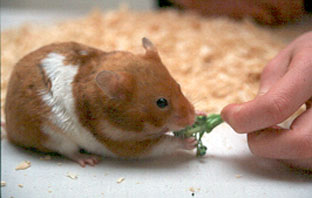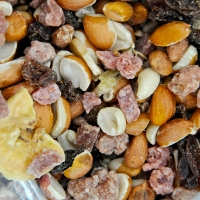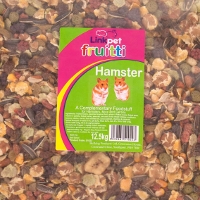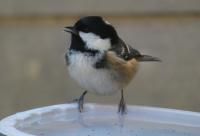- Home
- Special Offers
- New Products
- FAQs
- Customer Video Gallery
- Customer Photo Gallery
- Bird Facts
- Bird Food Blog
- Bird Information
- Feeding Advice
- Small Animal Information
- A to Z of Guinea Pigs
- A to Z of Hamsters
- A to Z of Rabbits
- Basic Care for Guinea Pigs
- Basic Care for Hamsters
- Basic Care for Rabbits
- Basic care for Chinchillas
- Basic care for Ferrets
- Basic care for Gerbils
- Basic care for Mice
- Basic care for Rats
- Buying a Healthy Small Animal
- Does your Reptile need a Licence
- Equipment for Ferrets
- Equipment for Hamsters
- Equipment for Mice
- Equipment for your Chinchilla
- Equipment for your Gerbil
- Equipment for your Guinea Pig
- Equipment for your Rabbit
- Keeping a House Rabbit
- Dog Information
- Cat Information
- Customer Information
- Bird Food
- Small Animals Food
- Pond Fish Food
- Dog Food
- Cat Food
- My Account
| Tweet |

|
Equipment for Hamsters
Abstract: Thinking of owning a hamster? Then check out the Twootz guide to essential items for first-time owners!
Create the ideal home for your hamster by ensuring you buy everything he needs to lead a happy and healthy lifestyle.
Cage
When purchasing a cage for your hamster you need to consider the following:
Size
Buy the biggest cage you can afford that will fit comfortably into your home.
The minimum cage size for an adult hamster is 60cm long x 30cm wide x 30cm high.
Ensure that the cage is situated in a draught-proof yet well-ventilated spot.
Construction
Hamsters like to chew, therefore most cages are constructed from strong wire. Hamsters will spend hours gnawing on the bars of their cage.
A glass aquarium (fish tank) makes a good hamster home as it allows a deep layer of bedding to be given, for burrowing purposes, and prevents his incessant gnawing on cage bars.
The spacing between the bars of his cage should be small enough to stop your hamster from squeezing through them and escaping.
Ensure that your hamster’s cage is free from dangerous protrusions that could cause him injury.
Feeding
Your hamster will require the following feeding accessories:
A heavy earthenware or metal bowl to prevent him from tipping it over.
A gravity-feed water bottle to prevent contamination.
A bottle-brush to clean out his water bottle.
Twootz provides Hamster food and Small Animal fruity mix which are both ideal for your Hamsters well being.
Bedding
Suitable bedding materials include:
Wood shavings – ensure they are derived from untreated soft wood (eg pine) as is usually sold in pet stores, otherwise your pet may suffer from respiratory ailments and allergic reactions.
Hay – only use clean, fresh hay and remember to offer an additional daily source for eating.
Shredded paper – ensure that it is free from ink in case your hamster chews it.
Prepared small animal bedding as is available from pet shops.
Avoid sawdust as the fine particles may irritate your hamster's eyes and respiratory tract.
Toys and treats
Although hamsters are nocturnal, they enjoy being offered toys and treats to play with during their waking hours. Move them regularly around his cage to prevent him from becoming bored. Remember that treats should be given in moderation to prevent obesity and selective feeding.
Suitable toys include:
Tubes – used cardboard toilet roll tubes make excellent play and chew toys.
Terracotta flowerpots – avoid plastic ones as these are chewable.
Deciduous tree branches – hamsters particularly enjoy apple tree branches.
Exercise wheels – ensure these are of solid design to prevent leg injuries.
Cardboard boxes – cut out holes in them to provide hiding and nesting places for your hamster.
Suitable occasional treats include:
Fresh and dried fruit and vegetables – hang them in your hamster’s cage to make him work for his treat.
Stickle treats – available in a wide range of flavours and recipes from pet shops.
Baked wholemeal bread and dog biscuits – good treats for chewing, therefore they help to maintain dental health.
Grooming
Long-haired hamsters require daily grooming to prevent their coats from matting. You will need the following equipment in your grooming kit:
A soft-bristled brush – a soft-textured toothbrush makes an ideal hamster-sized brush.
A small comb – to gently tease out tangles.
Create the ideal home for your hamster by ensuring you buy everything he needs to lead a happy and healthy lifestyle.

Cage
When purchasing a cage for your hamster you need to consider the following:
Size
Buy the biggest cage you can afford that will fit comfortably into your home.
The minimum cage size for an adult hamster is 60cm long x 30cm wide x 30cm high.
Ensure that the cage is situated in a draught-proof yet well-ventilated spot.
Construction
Hamsters like to chew, therefore most cages are constructed from strong wire. Hamsters will spend hours gnawing on the bars of their cage.
A glass aquarium (fish tank) makes a good hamster home as it allows a deep layer of bedding to be given, for burrowing purposes, and prevents his incessant gnawing on cage bars.
The spacing between the bars of his cage should be small enough to stop your hamster from squeezing through them and escaping.
Ensure that your hamster’s cage is free from dangerous protrusions that could cause him injury.
Feeding
Your hamster will require the following feeding accessories:
A heavy earthenware or metal bowl to prevent him from tipping it over.
A gravity-feed water bottle to prevent contamination.
A bottle-brush to clean out his water bottle.
Twootz provides Hamster food and Small Animal fruity mix which are both ideal for your Hamsters well being.
Bedding
Suitable bedding materials include:
Wood shavings – ensure they are derived from untreated soft wood (eg pine) as is usually sold in pet stores, otherwise your pet may suffer from respiratory ailments and allergic reactions.
Hay – only use clean, fresh hay and remember to offer an additional daily source for eating.
Shredded paper – ensure that it is free from ink in case your hamster chews it.
Prepared small animal bedding as is available from pet shops.
Avoid sawdust as the fine particles may irritate your hamster's eyes and respiratory tract.
Toys and treats
Although hamsters are nocturnal, they enjoy being offered toys and treats to play with during their waking hours. Move them regularly around his cage to prevent him from becoming bored. Remember that treats should be given in moderation to prevent obesity and selective feeding.
Suitable toys include:
Tubes – used cardboard toilet roll tubes make excellent play and chew toys.
Terracotta flowerpots – avoid plastic ones as these are chewable.
Deciduous tree branches – hamsters particularly enjoy apple tree branches.
Exercise wheels – ensure these are of solid design to prevent leg injuries.
Cardboard boxes – cut out holes in them to provide hiding and nesting places for your hamster.
Suitable occasional treats include:
Fresh and dried fruit and vegetables – hang them in your hamster’s cage to make him work for his treat.
Stickle treats – available in a wide range of flavours and recipes from pet shops.
Baked wholemeal bread and dog biscuits – good treats for chewing, therefore they help to maintain dental health.
Grooming
Long-haired hamsters require daily grooming to prevent their coats from matting. You will need the following equipment in your grooming kit:
A soft-bristled brush – a soft-textured toothbrush makes an ideal hamster-sized brush.
A small comb – to gently tease out tangles.











